Liver is the food that we love to talk about but hate to eat. The nutrition found in just a small serving of liver cannot be matched by any other food on the planet!
The only downside to liver is that the taste is difficult to stomach, to say the least. And like most people, I wish I could say I love liver, but I just don’t.
Many proponents of the Paleo diet tout liver as a superfood that we should all be eating weekly. But when it comes to actually enjoying eating this nutrient powerhouse, that’s often easier said than done.
In this article, I’m going to share why you should give liver a try, plus my top tips for eating liver and actually enjoying it.
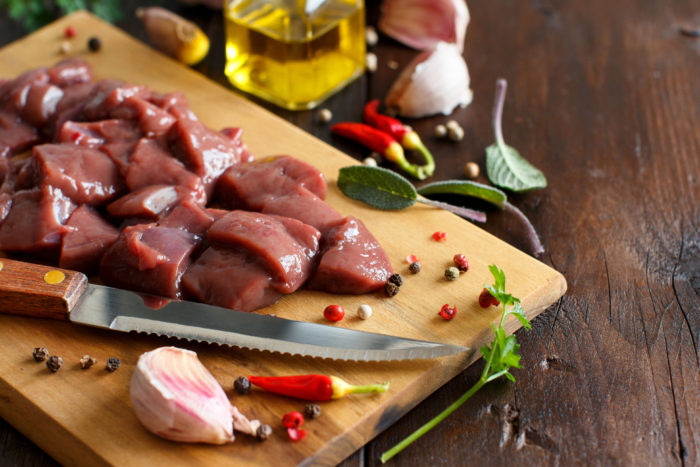
Why You Should Be Eating Liver
In general, organ meats contain between 10 and 100 times the nutrients than the more commonly consumed muscle meats.
Plus, they’re often sold at a fraction of the price of other cuts of meat. This makes consuming liver great for your health and your wallet.
Liver contains large amounts of Vitamin B12, Vitamin A, Iron, Folate, Biotin, and Selenium per serving.
To put this in perspective: one serving of liver, which is only about 2oz, will get you:
- 356% of your RDA of Vitamin A
- 112% of Vitamin B2
- 36% of Folate
- 658% of Vitamin B12
- 20% of Iron
- 400% of Copper
- 28% of Selenium
- 20% of Zinc
- 238mg of Choline
Compared to the nutrition profile of something like grass-fed ground beef, egg yolks, or leafy greens, you can’t match the nutrition contained in liver.
For example, here’s a table comparing the nutrition in one 2 oz serving of liver versus in one 2 oz serving of grass-fed beef.

Grass-fed beef is considered a healthy, nutrient dense food. But it just can’t compare to the nutrient profile found in high-quality liver.
In case you’re concerned that eating liver could subject you to toxins, here’s a great article from Chris Masterjohn that debunks that theory.
Liver truly is nature’s superfood. Incorporating it into your diet is definitely worth the roadblocks involved with learning to love it.
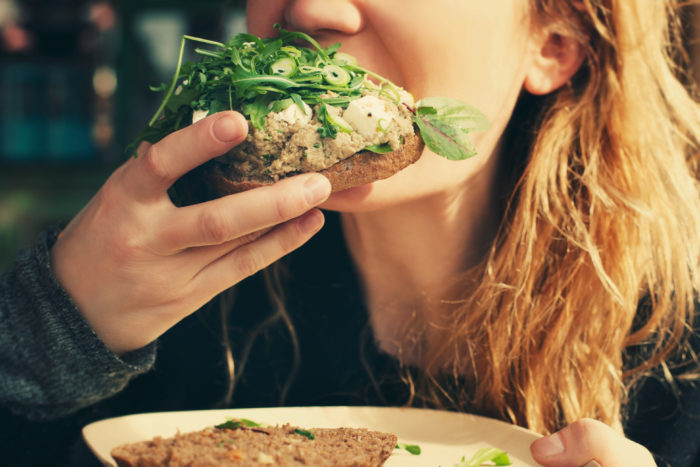
Can You Eat too Much Liver?
You should be aiming to eat about a quarter pound, or 4oz, of liver a week.
And while consuming liver is extremely beneficial, you can actually eat too much of it.
Two ounces of liver contains 356% of your daily recommended value of vitamin A.
A toxic condition known as hypervitaminosis A is caused by the result of consuming megadoses of vitamin A. This can occur either at one time or chronically.
If you stick to the recommended 4oz of liver a week, you shouldn’t be consuming too much vitamin A, and shouldn’t have to worry about toxicity. But I wouldn’t recommend eating any more liver than that without consulting your doctor.
Liver also contains more copper than zinc. These minerals need to exist in a delicate balance in our bodies. And when you consume or supplement with an excess of copper without adequate zinc you can experience several different health problems.
Again, if you consume moderate amounts of liver along with a variety of other foods, you shouldn’t have an issue with this copper-zinc imbalance.
But just loading up on liver at every meal probably isn’t the best idea.
In general, liver is an extremely beneficial food to eat. But more is not always better, and you can eat too much.
So don’t go overboard in your liver consumption in an attempt to gain more health benefits from this superfood.
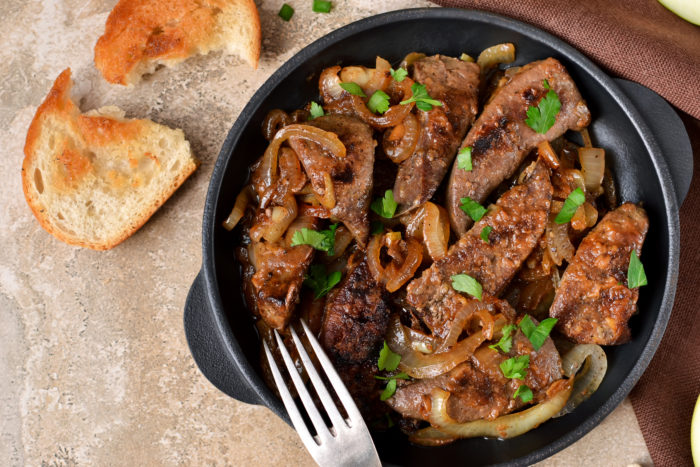
My Recommendations for Eating Liver
Now that we understand why you should at least try to incorporate liver as a part of your health-promoting diet, let’s look at how we can make liver a little more palatable.
Here are some of my favorite tricks to consuming liver on a regular basis and actually enjoying it (or at least tolerating it!)
Use Lamb or Calf Liver Instead of Beef Liver
Whenever I’ve cooked liver in the past, I’ve always found lamb and calf liver to be milder and easier to eat than beef liver.
It might have to do with the age of the animal or the fact that the animals drink milk as opposed to eating grass. But I’ve always preferred the taste and texture of lamb or calf liver over beef.
The nutrient profiles of these different animal’s livers are similar, so you won’t be missing out on anything by buying the milder, easier to enjoy livers.
I usually find my liver at one of the local farmers markets by me, such as the State Farmers Market, Durham Farmers Market, or Carrboro Farmers Market.
Soak Liver in Lemon Juice Or Milk
Chris Masterjohn has some great methods for cooking liver. One of his key tips is to soak the liver in something acidic such as lemon juice. After it’s done soaking, pat the liver dry with clean paper towels and cook it however you’d like.
Soaking liver in an acid can help cut down on some of the metallic or “iron” taste common in beef and lamb liver.
Chris thinks it’s because the acid of the lemon juice helps protect the liver from oxidative damage, which can cause an off-taste.
I’ve also found that soaking liver in milk or kefir before cooking has a similar flavor-improving effect on the taste.
This is also the cooking strategy recommended by the well-known cookbook Nourishing Traditions, which has a lot of great recipes for traditionally prepared, nutrient-dense foods.
Don’t Overcook It
Whatever you do, don’t cook your liver into a piece of rubber.
That’s probably the biggest mistake most people make when trying to pan-fry liver.
There is more likely to be bacteria in the interior of liver as compared to muscle meat. So the USDA recommends cooking liver to an internal temperature of 160 degrees Fahrenheit.
But, this doesn’t mean overcooking your liver is your best option.
My opinion is that if you freeze the liver for a few days before cooking it, there will be a far lower risk of bacterial contamination, and it will be okay to cook the liver to medium-rare doneness.
Some folks even recommend cooking liver rare, but I’d caution avoiding this for children, pregnant women, the elderly, or anyone with a compromised immune system.
Would you like to save this post?
Your email address is 100% safe and will never be sent spam.
Cook it for a few minutes each side and don’t let it get overcooked and tough. Otherwise, you’ll be chewing for 30 minutes come dinnertime!
Use A Recipe
There are lots of great liver recipes online that can help you find ways to make your liver more palatable.
There’s no reason to eat liver plain if you don’t enjoy it. To make liver more enjoyable, I often simply fry up some bacon and onions to pile on top of it. And then pour on the ketchup! 🙂
Here are a few other recipes that can help you get creative:
- Bacon Beef Liver Pâté from Autoimmune Paleo
- The Silkiest Chicken Liver Pâté from The Healthy Foodie
- Chicken Liver Pâté from Zenbelly
- Chicken Liver Mousse from The Paleo Parents
- Crispy Spiced Chicken Livers from The Clothes Make the Girl
- Beef Liver with Fig, Bacon and Caramelized Onion Compote from The Healthy Foodie
- Easy Chicken Liver Pâté from Balanced Bites
- Beef Bacon 50/50 Braunschweiger Burger Sliders from The Paleo Parents
- Tex Mex Loaded Meatloaf from The Healthy Foodie
- Ultimate Beef and Liver Chili by Mommypotamus
- Egg-Free, Tomato-Free (Hidden Liver ) Paleo Meatloaf from The Paleo Mom
- Warm Liver and Toasted Cashew Salad from The Healthy Foodie
- Turkish (Hidden Liver) Meatballs from The Paleo Mom
- Beef Liver with Caramelized Peaches and Onion Compote from The Healthy Foodie
With this many options, there’s no excuse not to find a recipe you enjoy!
Make “Hidden Liver” Recipes
You may have noticed a couple of the recipes listed are “hidden liver” recipes. In these recipes, you primarily cook with some other type of ground meat and add a small portion of liver to it.
This is something my mom did growing up a fair bit. She made meatloaves that are mostly ground beef with enough liver mixed in to boost the nutritional content without overpowering the flavor of the meatloaf. Shockingly, even my dad likes it and he’s pretty picky when it comes to things like liver.
My mom doesn’t have a solid recipe that I can share, but she does recommend that you mix the liver with ground meat in a 1:3 ratio to best hide the liver flavor.
This means for every pound of liver you use, add it to 3 pounds of ground beef/pork/chicken/lamb so that the liver flavor does not completely overwhelm the entire recipe.
I’ve had clients complain that their “hidden” liver meatballs were not hidden whatsoever, and they had to gag it down. Make sure you’re not using so much liver in comparison to the ground meat that the liver is the only thing you taste.
It helps to soak the liver in lemon juice or milk ahead of time – like you would do if you were pan-frying it.
Make Frozen Liver Cubes
This is a technique I’ve used before to help sneak liver into my food on a regular basis.
The initial prep is a little icky, but once you’ve got a nice tray full of frozen liver cubes, it’s super easy to pop them into any dish you’re cooking for an extra nutrient boost.
Robin at Thank Your Body breaks the process down into 5 easy steps:
- Thaw liver slightly. While still mostly frozen, cut liver into chunks.
- Place chunks in a food processor.
- Process until it’s all gross and gooey.
- Scoop liquefied liver into an ice tray.
- Cover and freeze.
You can then use these ice cubes in stir-fries, ground meat dishes, and more.
Each cube will provide about an ounce of liver. So use four cubes a week to get your recommended quarter pound of liver in.
Try Liz’s Raw Liver Smoothie Shot
Liz Wolfe, author of Realfoodliz.com and Eat The Yolks, has come up with a creative way to get your liver in without having to taste it.
She calls them her Raw Liver Smoothie Shots, and while I haven’t (yet) tried them myself, I’ve heard from others that it’s a decently tolerable way to get liver into your diet.
Here’s how she makes them, using frozen liver “squares” she’s made, similar to the frozen cubes discussed above:
I mix 1/4 cup melted frozen strawberries OR tart cherry juice with a few squares of liver. I add enough water to cover the blender blades, if necessary, then pureé. Sip it down. Done.
Make Frozen Liver Pills
You might be sensing a theme here… frozen liver is easier to handle (for some people) than cooked liver.
Many of my friends and clients are fond of the DIY frozen liver pill method, described by Empowered Sustenance as “the easiest way to eat liver.” Here’s her recipe:
Rinse the liver and pat dry. With a sharp knife, carefully cut the liver into pill-sized chunks. Place the pieces, separated, on a parchment-lined cookie sheet. Freeze until solid.
Transfer the frozen “liver pills” into an airtight container and store in the freezer. Freeze for 14 days before eating to kill any pathogens in the liver. Swallow a couple of frozen “liver pills” with every meal.
Personally, I can’t stand this method because I have a weirdly tight swallowing reflex and I always feel like these little frozen cubes get stuck in my throat.
Maybe I didn’t cut them small enough, but to cut them any smaller would have required borrowing a knife from a sushi chef. So I don’t personally like or use this technique.
Your experience may be totally different, though, so don’t be afraid to experiment! If you hate this method, you can always blend up the frozen chunks to use with Liz’s liver shot.
If All Else Fails – Get A Supplement
I usually recommend getting as much nutrition from your food as possible, and to minimize the use of supplements. But I understand that not everyone will be able to stomach any of the above liver consumption methods.
And don’t feel discouraged if you just can’t stand eating liver. While it is a superfood, it’s not the end-all of nutrition, and there are other ways to consume the nutrients found in liver.
If you just can’t stand the thought of doing any of these liver-consumption techniques for the long haul, I think a desiccated liver supplement is a good “last resort” to get your liver in.
My favorite supplement is a grass-fed desiccated liver powder in capsule form.
It’s not hugely expensive, although it’s a lot more expensive than simply eating liver. But it’s a great option if the thought of eating liver has you running fast in the opposite direction!

Final Thoughts on Eating Liver
Like anything else in your health and wellness routine, consuming liver isn’t a necessity.
Yes, it is an extremely nutrient-dense source of some of the most important vitamins and minerals.
But if you don’t eat liver, for whatever reason, you’re not putting your health at any insurmountable disadvantage.
There are other food sources where you can get the same vitamins and minerals that you find in liver. As long as you’re focusing on eating a large variety of mostly real foods, you’ll likely be fine when it comes to nutrient density.
If you focus on eating a well-rounded diet full of leafy green vegetables, grass-fed meats, healthy fats, and vibrantly colored foods, you’ll most likely be getting everything your body needs, whether you eat liver or not.
But, if you are interested in eating liver, you certainly don’t have to choke it down. I’ve found that the changes I make for my health are best kept when they’re easily implemented into my life, and I actually enjoy doing them.
If you want to try and incorporate liver into your routine, take some time to find a method or recipe that makes consuming it actually enjoyable.
Do you enjoy the taste of liver, or are you someone who needs to hide it in order to eat it? Is there a liver eating technique that you use that I didn’t mention here? Share your recommendations in the comments below!
This post may contain affiliate links. If you click on a link and make a purchase, I may receive a small commission.
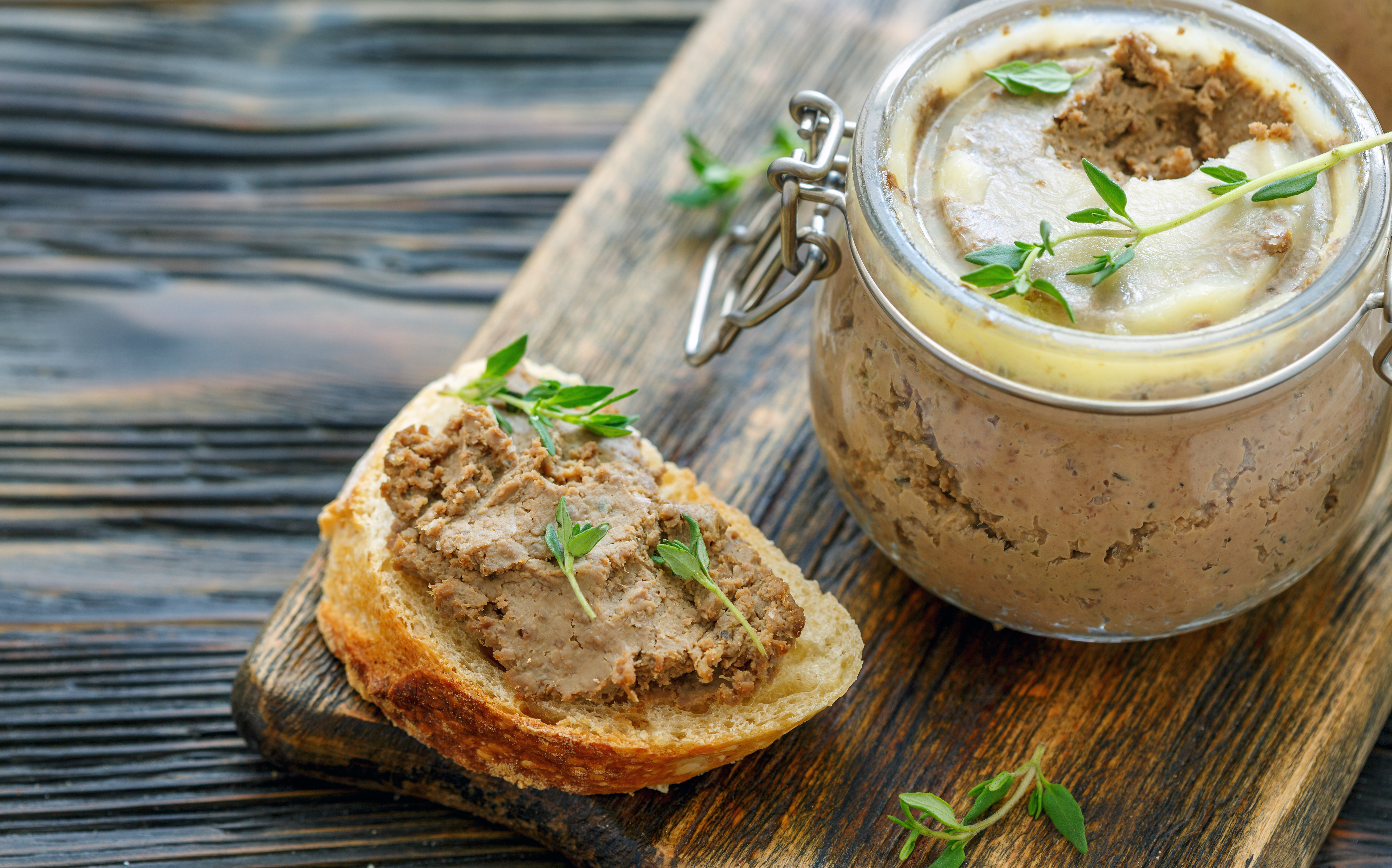
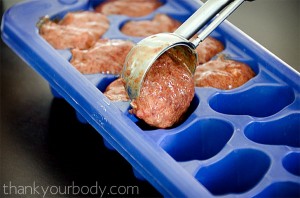
+ show Comments
- Hide Comments
add a comment